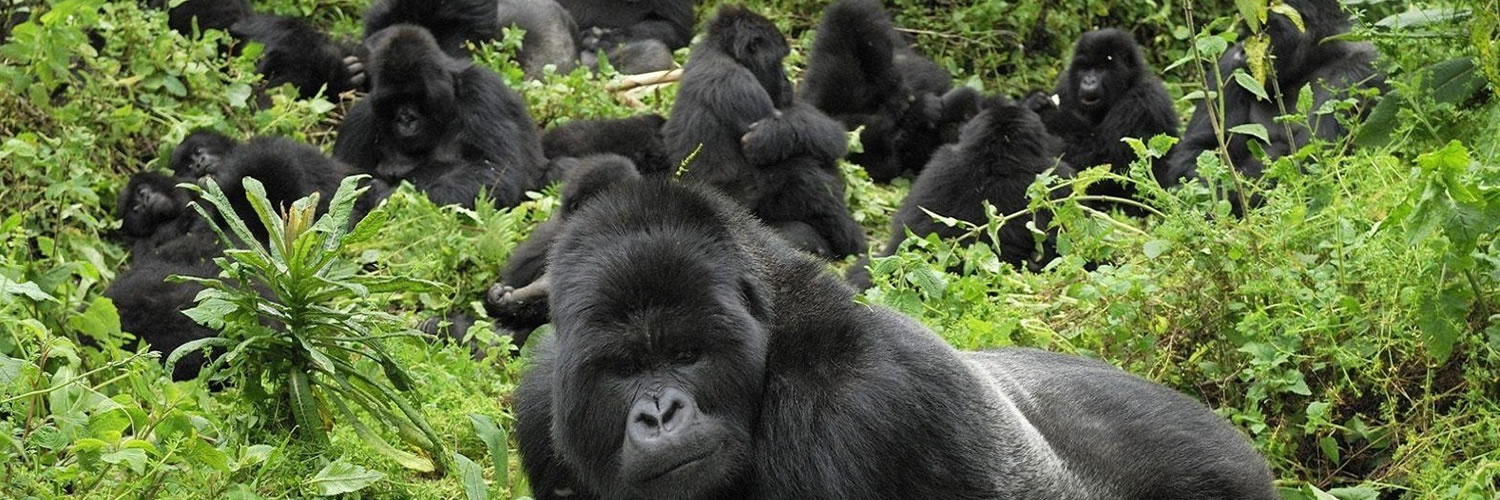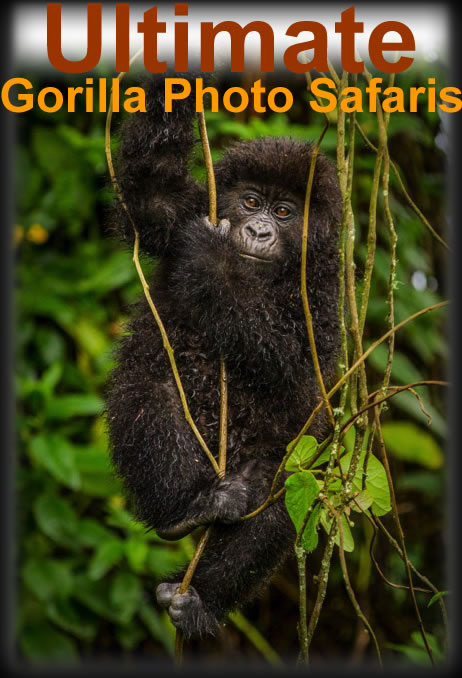
Gorilla Tourism – Gorillas and tourism are inextricably linked. Arguably, neither has a future without the other.
The annual revenue earned directly from gorilla tourism is an important component of funding conservation and management of the parks, as well as local and national economies.
Reconciling the demand for tourist dollars with the needs of the gorillas is a delicate balancing act. The key is to minimize the risk of disease transmission and to avoid disrupting the gorillas’ natural behavior.
Accordingly, tourists must abide by very strict rules (if you are planning on seeing gorillas in the wild, take the Gorilla Friendly Pledge.
Gradual harmonization of such rules and regulations across all four mountain gorilla parks, as well as promotion of regional tourism circuits, is paving the way for the development of a regional tourism programmer.
The long-term success of gorilla tourism hinges on the enthusiasm and commitment of the local communities around the parks.
International Gorilla Conservation Programme and its partners have introduced mechanisms such as revenue sharing schemes to ensure that these people benefit directly from tourism.
In addition, small and large tourism enterprises have been initiated by cooperatives and associations, with support from International Gorilla Conservation Programme and sometimes in partnership with the private sector.
Other attractions
Gorillas are by no means the only regional tourist attraction. A wealth of stunning wildlife, breathtaking scenery, challenging hikes and fascinating culture are, in themselves, persuasive arguments for visiting the region.
International Gorilla Conservation Programme has worked with a wide range of partners on diversification of nature and culture tourism.
New trails have been built to Mount Visoke’s summit and Crater Lake, to Dian Fossey’s grave, and to Lake Ngezi, thereby encouraging visitors to linger in the park and helping the development of local enterprises linked to tourism in the region.
Cultural trails such as The Batwa Trail and the Buniga Forest Walk also exist in/near gorilla parks in Uganda, and the Kinigi Cultural Center and Community Walk near Volcanoes National Park in Rwanda.
Three groups of golden monkeys Cercopithecus mitis kandti, a beautiful blue monkey subspecies found only in the Virungas have also been habituated and can be visited.
People & Gorilla Tourism
Tourism
How long have tourists been able to visit gorillas?
Gorilla tourism was started in Uganda by Walter Baumgärtel, who managed the Travelers Rest Hotel from 1955 until 1969.
However, intensive gorilla tourism only started in 1978, when the Mountain Gorilla Project in Rwanda habituated some gorilla groups specifically for tourists. At about the same time gorilla tourism started in the Kahuzi-Biega National Park.
How can tourism help gorillas?
The revenue generated by gorilla tourism aims to ensure gorilla conservation. The number of gorillas in the Virungas increased from 261 in 1973 to 324 in 1989 – the tourism project was credited with this positive development. Nowadays, it is possibly to visit the eastern and the western gorillas in several areas.
How are visitors to the gorillas monitored?
To prevent harm to the animals, the number of tourists per gorilla group is usually limited to eight people and the duration of the visit is restricted to 1 hour.
The considerable amounts of money that are paid for gorilla visits are tempting and can easily result in corruption. Many people make a profit and there is a risk that money is the prime motivation here, not gorilla conservation.
Only very strict monitoring by state actors can prevent people ignoring the rules. If the required minimum distance is not adhered to, the risk of transferring diseases is drastically increased.
It is up to every individual tourist to help ensure that tourism will benefit and not harm the gorillas.
Gorilla Tourism – Pros and Cons
Intensive gorilla tourism was set up in Rwanda in the late 1970s: groups of mountain gorillas were habituated to humans with the specific purpose of taking tourists to visit them.
The same procedure was followed in the Democratic Republic of the Congo and in Uganda. To make sure that the animals are not adversely affected by visits, the tourists have to comply with strict rules.
The question arises, however, as to whether using the gorillas as a tourist attraction is actually a beneficial protection measure – tourism may also have negative effects.
Now some of the tour companies encourage the conservation of mountain gorillas in Uganda, Rwanda & DRC Congo.
Some economical gorilla tours Uganda are customized for the travelers willing to visit gorillas and also participate in some work done by some of the organizations like Gorilla Doctors looking after the healthy of gorillas in the mist.

